Henry III (2020 & 2023)
Book Number: 32a and 32b
Henry III is another king who has had very few biographers over the years, and none from academia since Sir Maurice Powicke’s 1947 published ‘King Henry III and the Lord Edward and The Thirteenth Century’. Professor Carpenter’s biography of Henry III is the last of the books promised in the Methuen years of the series, other than the two which were abandoned (Alfred the Great and William & Mary). This book was listed as “In preparation” for The English Monarchs series as early as the 1989 Methuen title 'Edward the Confessor', and credited to Dr. David Carpenter. In the intervening years Carpenter has earned his professorship. The book was commissioned during the Methuen years when J.J. Scarisbrick was supervising editor of the series. Yale added this book to their website list of series books in September 2019 for publication in May 2000 (UK) and June 2000 (USA). The paperback of Volume 1 was released in February 2021, and Volume 2 in September 2024.
Henry III is the twentieth book Yale has added to the series over the twenty-three years of their custodianship starting in 1997, an impressive batting average, and even more impressive when compared with Eyre/Methuen's twelve books over twenty-eight years, from their first book in 1964 to the final Methuen book in the series published in 1992. There was a five-year gap: Methuen retired to the pavilion in 1992 and Yale came to the crease in 1997.
Note that the book following Henry III volume 1 in the series was, appropriately, the new Edward the Confessor. The Confessor was adopted by Henry III as his patron saint. The publication of these two books in sequence is a happy accident, but almost seems like a cunning plan. Volume 1 takes the biography to the revolution of 1258, and Volume 2 to the end of Henry's reign in 1272.
There are precedents for lengthy studies of a reign being published: Wilfred Warren’s biography of Henry’s grandfather Henry II; David Bates’ book on the Conqueror; and Mark Ormrod’s study of Edward III. All these books are about 800 pages, and a similar length and intensity is to be delivered for Henry’s reign of 56 years. Furthermore, a multi-volume work is not unknown from Yale; the publisher issued a two-volume study of Wellington (2013 and 2015) and of Napoleon (2008 and 2013), with each volume being about 700 pages long. After a thirty year wait for Henry III it is appropriate to celebrate this major achievement by David Carpenter in such a style.
Professor Carpenter's website at Kings College London noted at the time of his 2014 published Magna Carta book that he was working on his biography of Henry III "...which he now brought down to the great revolution of 1258". This indicates that at least five years before the publication of the first volume of Henry III his work had reached the stage of the remainder of Henry's reign for what we now know is the second volume.
The sequential numbering of the series books is not something done by either Methuen or Yale; it is a bibliographic embellishment made by this website. Nevertheless, this two-volume release is being considered as one work and the thirty-second book published in the series. Therefore the two books will be catalogued as book 32a and 32b. The publication of these two volumes was punctuated by Edward the Confessor (2020), but as Professor Carpenter has been working on Henry III for several dacades the numbering is appropriate rather than nominating the two books as numbers 32 and 34.
Professor Carpenter is one of the leading scholars on the 13th Century and has already written two books on Henry III: ‘The Minority of Henry III’ (Methuen, 1990), which examines the first decade or so of Henry’s reign; and ‘The Reign of Henry III’ (Hambledon Continuum, 2003), which is a collection of sixteen of his papers and essays previously published in journals and five new essays. ‘The Minority of Henry III’ can be obtained at a reasonable cost from used book vendors. ‘The Reign of Henry III’ is difficult to obtain, owing perhaps to a small print run by its specialist academic publisher. Seek it out in a scholarly library.
The author's introduction to ‘The Minority of Henry III’ states that the book started as the biography of Henry, but diverted into a study of his minority. The richness of the source material demanded that this period of Henry’s life have its own account. He writes, “I do not see the present book as in any way a 'Henry III, part I’. Rather it is a self-contained work on a vital period of English history, a period with its own themes and settings.” The 1990 book is a substantial work, running to more than 400 pages of text plus the notes, references, index and so on. It will continue to provide a wealth of detail on this aspect of Henry's life which is not possible to include in a general biography. He addresses ‘The Minority of Henry III’ in the first footnote of the preface in the new book on preliminary page xi: "Since I have covered the politics of the minority in my Minority of Henry III, published in 1990, I have sketched the course of events, especially in the early minority, when Henry was not involved, very lightly". English Monarchs collectors should regard this book as a the prelude for the two-volume biography and settle down for a long read.
The cover art must have posed a bit of a problem for Yale; there are very few images of Henry III, when compared with other monarchs of the middle ages. For volume 1 Yale's artists decided on simplicity, with a handsome two-toned version of Henry's tomb in contrasting red and green, simultaneously suggesting both ancient and modern. Photographs of the cover don't do it justice; the green background is flecked with hints of black, giving the dust jacket a feeling of depth, warmth and dimension. The background is a hint that Henry's favourite colour was green. The main title is embossed so that Henry III rises from the paper and it very tactile, a powerful reminder that there is no substitute for a physical copy of a book. Clearly a lot of thought has gone into this cover which is apparent when holding this handsome book. It's easy to have a complicated cover, but a lot of thought is required for a minimalist outcome; the art of writing is editing, and this is true also for the graphic arts. This webpage speculated in 2020 that the cover of volume two might see colours reversed, with the background red and the tomb likeness green, and happily that has come to pass. This makes a splendid pair of matching books. Those collectors who are lucky enough to own a copy of the 1990 Methuen book 'The Minority of Henry III' will be pleased to see that these volumes and the earlier book work well together on the shelf, both having a subtle earth-tone colour on their spines. Colour can also be found in the selection of illustrations which, as the author points out in the Yale Blog on his Henry III books (see here), is the first instance in the series of colour plates.
The structure of both volumes of 'Henry III' is largely chronological. The first chapter of the first volume is an examination of the years from Henry's birth to the end of the minority, taking fifty-seven pages. Two thematic chapters in the middle, comprising about one hundred and forty pages combined, look at 'The Piety of Henry III' and 'The Court of Henry III'. The final chapter is 'The Revolution of 1258', which provides a cliff-hanger end to this volume.
The second volume has breakout chapters looking at 'Henry and his people', 'Montfort's kingdom'; 'Recovery and settlement' plus and epilogue and conclusion chapter.
Professor Carpenter’s page at the King’s College London website informs us that his Oxford doctorate was supervised by John Prestwich (1914-2003), a name that keen-eyed English Monarchs readers would recognise. J.O. Prestwich was the father of Michael Prestwich, the author of the 1988 biography of Edward I. John Prestwich was a highly regarded Oxford historian and his obituary is worth reading, not least of all to discover that during the war he worked at code-breaking at Bletchley Park on Enigma, the German encoding machine. Michael Prestwich is thanked in the preface for reading the text and submitting suggestions.
'Henry III' was printed without an attribution to the English Monarchs series yet it is undeniably one of the titles in the series; it was commissioned and announced in the late 1980s, and Yale last year announced its publication by adding it to the list of series titles on their website and in public announcements. Often it is the paperback version of Yale's English Monarchs series books that bear a more explicit statement of series status, so this is not unusual for a hardback release. Volume 1 does not include a list of 'Other titles in the series' but volume 2 does have this list. This therefore requires an relaxation of what we categorise as a series book to be any mention by the publisher in any format that a book is in the series, although relying on a website to be an authority is in the long term a bit risky because of the ephemeral nature of webpages and their content. Nevertheless, the purpose of this website is to record such information and, duly, this book is without doubt listed as the thirty-second book in the series and Yale's twentieth contribution to it.
One of the first professional reviews of the book was by Professor Nigel Saul, the English Monarchs biographer of 'Richard II'. Professor Saul's review in History Today, Volume 70 Issue 7 July 2020, concluded with the comment: "This is a magisterial biography, authoritative yet accessible". He also notes that this book uses the "thickened narrative" approach - a largely chronological biography strengthened with "contextual detail to give an idea of the wider world in which the king moved", and further noted that Professor Carpenter "...is well aware of the possible methodological objections to his work, and is careful to offer his readers a sense of the social and intellectual framework within which Henry operated." Saul credits this book as being a vast improvement on previous scholarly biographies of Henry, specifically the 1947 Sir Maurice Powicke book, which is achieved by Carpenter's drawing on a wide range of untapped sources which put this new work well above others, specifically his use of, as Saul says, "...the mountain of legal and financial material in the National Archives...".
Dominic Selwood reviewed the book in the weekly political magazine The Spectator (23/05/2020), praising Carpenter's "...easy handling of so many interlocking strands, weaving the official records and gossipy chronicles into a vibrant account of the reign." and added praise to Yale University Press which "...is to be congratulated on allowing Carpenter to explore so many aspects of 13th-century English government at such length. The glorious details — lamprey cooking included — are what make it a pleasure."
Darren Baker (a biographer of Henry III - see below) has a lengthy review of Carpenter's book at his website. Read Darren's review here, or use the link provided on the website to download a pdf copy of the text. This analysis of the book is useful for readers as Baker's opinions of Henry's reign have similarities and differences to Carpenter. These divergences provide a useful calibration tool after reading the latter.
The publication date of the first volume was chosen carefully. May 2020 marked the 800th anniversary of Henry's coronation in Westminster Abbey (his second - after the hasty 1216 coronation in Gloucester following the death of King John and during the emergency of Louis' intervention in support of the rebel barons).
This book will be seen by long-term readers of the series as finishing off the early reigns in spectacular fashion. For those of us who have been enjoying the English Monarchs books since the Methuen days, it has been a long road (and read) through the publications which now span almost all the reigns to the 18th Century. The earliest titles were, mostly, of medieval kings and for a while it seemed that this was the natural home of the series. The expansion under Yale into the Georgians and some Stuarts has given the series quite a different feel. However, Henry III is a triumphant homecoming for English Monarchs; a return to familiar territory. Not quite a case of saving the best until last, because that would suggest a devaluation of the other wonderful studies in the series, but one could be forgiven for having the thought that this book is something of a capstone, slotting in as the final part of the of the narrative of the early kings.
Additional content:
Video:
You can watch Professor Carpenter discuss Magna Carta and King John in this 25 minute video on YouTube. If the video fails to play use this link.
Audio:
Get a taste of the book and the story of Henry III in Professor Carpenter’s lecture at the Chalke Valley History Festival (25th June 2013) where he spends an hour discussing Henry and the extraordinary Thirteenth century at this link.
David Carpenter talks to Dan Snow about Henry III, Magna Carta and his friend, neighbour and fellow historian Jonathan Sumption at the time of the release of volume 1. This discussion was in the HistoryHit Podcast of 12 July 2020. Use this link to hear it. A further discussion with Matt Lewis to accompany volume 2 of the book was published as part of the Gone Medieval podcast on 18 May 2023. Use this link to hear it.
Email for Comments | Sitemap | Main Book Page | Saxon/Pre-Normans | Normans | Angevins | Plantangents | Tudors | Stuarts | Georgians
ISBN data
Volume 1
Hardback - 9780300238358
Paperback - 9780300259193
Volume 2
Hardback - 9780300248050
Paperback - 9780300279337
Covers:
The hardback cover of Volume 1 is an artful and simple (simplex?) representation of Henry’s tomb effigy at Westminster Abbey. The colours are reversed for Volume 2.
The paperback cover is a line drawing representation of the same tomb effigy, with a splash of red for volume 2, in sympathy with the hardback's red background. Note too the subtle mirror image in the paperback covers with Henry's tomb effigy illustration swapped to the other side of the image for volume 2 in contrast to the swapping of the colours in the hardback.
See the Abbey's information on this tomb at this link.
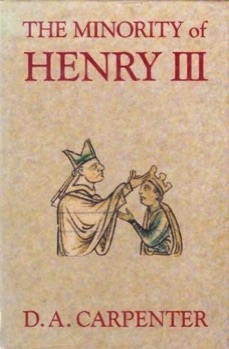
The Minority of Henry III (1990)
ISBN 9780413623607
While not in the series, this book has a unique relationship to the English Monarchs books. It was published by Methuen in the UK and The University of California Press the USA, the two publishers who, at the time of its publication, were the custodians of the English Monarchs series. Additionally, the book was written by the commissioned author of Henry III in the series, David Carpenter.
This website nominates Yale titles which could be considered a "near miss" for the English Monarchs series as 'Companion' titles, and recommends their acquisition by collectors as if they were part of the series. This Methuen book is neither a book in lieu of an absent Methuen or Yale book, nor of a subject close to the crown. Less still is it of a regent or contester, though it clearly is an account of a regency and triumvirate in the name of a king. Instead of acknowledging it as one of these Companion titles it is appropriate to list it here on the Henry III page and to recommend it as preliminary reading before progressing to Professor Carpenter's Henry III biography.
Cover: The book credits the cover image being a depiction of the coronation of Henry III by Stephen Langton, Archbishop of Canterbury, in 1220. It is taken from the Matthew Paris drawing in his Chronica Majora, Corpus Christie College, Cambridge, MS 16, f56
Henry III
in two volumes
By David Carpenter (1947- )
Professor of Medieval History
King's College London
Commissioning Editor: J.J. Scarisbrick
Book Editor: Heather McCallum
Volume 1: The Rise to Power and Personal Rule, 1207-1258
Volume 2: Reform, Rebellion, Civil War, Settlement, 1259-1272
Further Reading
In other publishing activity on Henry III, and after years of having no modern biography of this king, we find that three biographies of Henry III have been published in quick succession: by John Paul Davis (Peter Owen Ltd., 2013), Matthew Lewis (Amberley, 2016), and by Darren Baker (The History Press, 2017). The first two of these biographies are aimed at the general reader. Those already familiar with the 13th Century would be best served by by Darren Baker’s book, which is the closest of the three to an English Monarchs book. It is the most fulsome of the three at over 400 pages; the publisher, The History Press, is a highly regarded issuer of history titles; the research into the topic is evident in the notes and an extensive bibliography; and most tellingly it has a recommendation by Professor Carpenter on the rear cover.
In addition to these biographies of Henry, readers are referred biography of Henry III’s queen, Eleanor of Provence, by Margaret Howell (Wiley-Blackwell, 1997). This is an outstanding study of Eleanor and the period of Henry’s rule, and is referenced in the footnotes to Henry III. In her preface, Margaret Howell thanks David Carpenter above all others for his assistance with the book - and his insistence that she write it. Even after the publication of Professor Carpenter’s book this will be an essential text in studying Henry III. Carpenter has also nominated Howell and this book as having the greatest influence on him.
A special mention also must be made of a biography of a key figure in the reign of Henry III. ‘Simon de Montfort’ by Margaret Wade Labarge (1918-2009), adjunct professor of history at Carleton University, Ottawa. Her study of Montfort is a sibling of the early English Monarchs titles. It was published in 1962 by Eyre and Spottiswoode on the eve of their first English Monarchs book. It is almost a companion title to the series and has been described as a general narrative for the undergraduate student. In it’s time it was regarded as a thorough summary of current thought about Simon and Henry.
A further notable biography of the same age as Labarge's Montford book is one of the two biographies of Henry III's brother Richard of Cornwall: 'The King of Almayne' (John Murray, 1966) by T.W.E. Roche (1919-1972). Roche was a senior official at the British immigration service, not an academic historian. His interests included medieval history and, more importantly, railways. He did have the advantage of being literate in medieval German and the book announces that Roche was able to consult these sources for the first time for an English language book. The other biography of Richard, 'Richard of Cornwall' (Blackwell, 1947) was written by Noël Denholm-Young (1904-1975). It is long out of print but still in copyright, not in the public domain (as an ebook) and impossible to obtain as a book. Denholm-Young was a Fellow and Archivist of Magdalen College, University of Oxford, though not an academic teacher. Denholm-Young is referenced in David Carpenter's footnotes.
The standard and still in print modern academic account of Montfort is the biography by J.R. Maddicott (CUP, 1994). David Carpenter reviewed this book in The Journal of Ecclesiastical History, Volume 47, Issue 2 (April 1996), describing it as "a masterpiece of a biography which will never be replaced.” Darren Baker's revised edition of his biography of Montfort was published late in 2018.
Darren's new book on Richard of Cornwall, brother of Henry III was published at the start of 2023. This is an important addition to the scholarship of the period and will be the only modern biography of Richard, the first since the Roche book fifty-six years ago. 'Richard of Cornwall: The English King of Germany' can be purchased now for £20.00. Quote ISBN 9781398112179 to any bookseller to secure your copy.
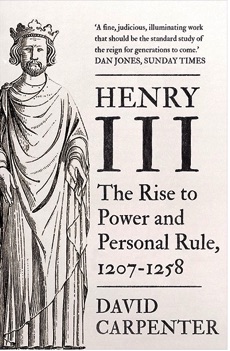
2020 Volume 1 Hardback
2021 Volume 1 Paperback
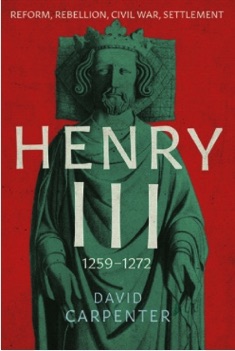
2023 Volume 2 Hardback
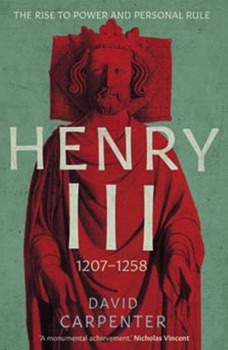
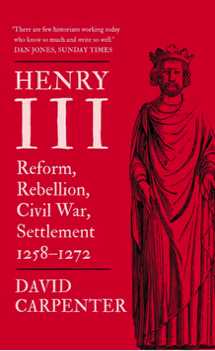
2024 Volume 2 Paperback